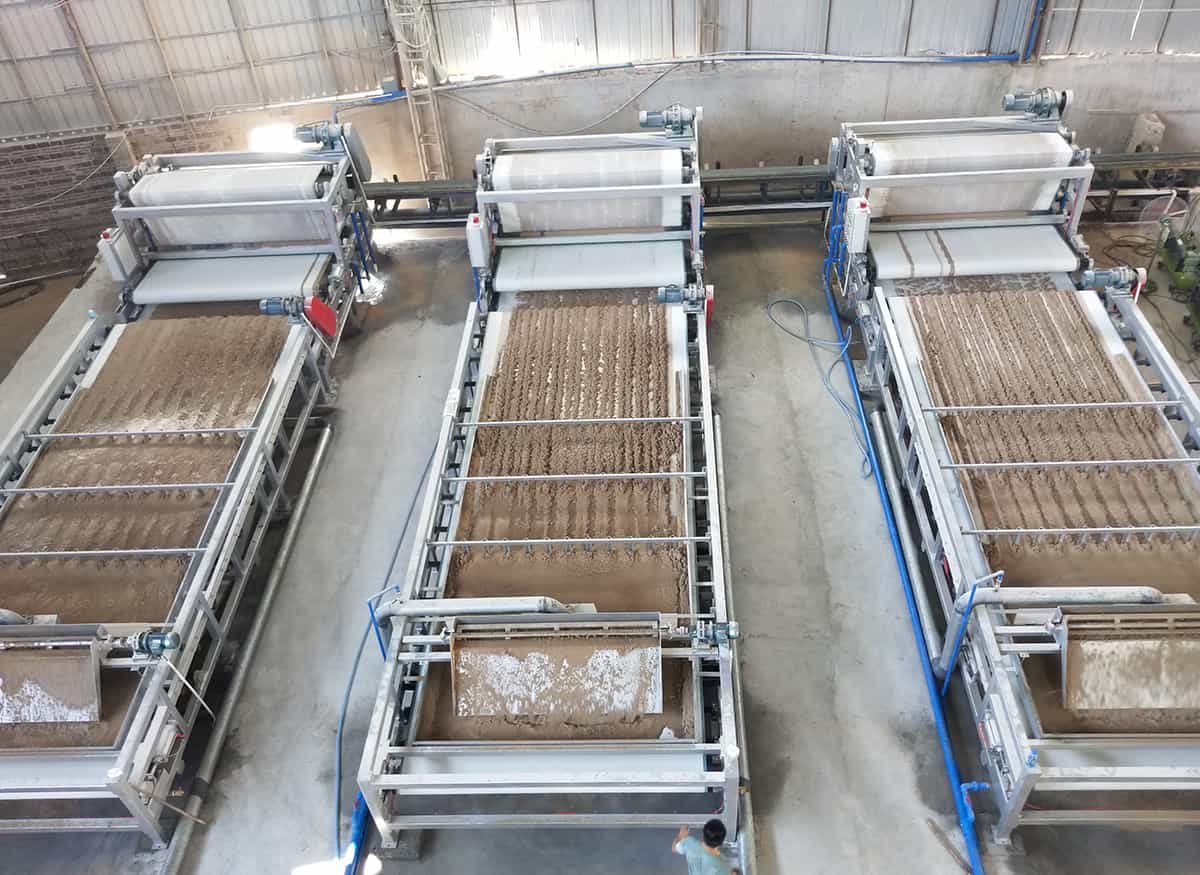Pulp Dewatering Press Machine
It is a process that use belt press to remove water from pulp. We need pulp dewatering in industries like paper making, food processing.


Principles of Pulp Dewatering
1.Feed the pulp into the belt press.
2.Two belts wrap the pulp in between.
3.The motor transmit the two belts through the rollers.
4.The rollers press against rollers with the two belts between them, and dewater the pu
Applications of Pulp Dewatering
1.Papermaking: In the paper industry, dewatering is critical to achieve the desired moisture content in paper pulp before forming sheets. Efficient dewatering enhances paper quality and reduces energy consumption during drying.
2.Food Processing: Dewatering pulp in food processing industries is crucial for producing concentrated juices, purees, and sauces. It improves product consistency and reduces transportation costs by lowering water content.
3.Wastewater Treatment: In wastewater treatment plants, dewatering processes separate solid sludge from water, facilitating disposal or further treatment of biosolids.
Dewatering Methods
Gravity Drainage: A simple yet effective method where pulp slurry flows over a series of screens or belts, and allowing water to drain under the influence of gravity. This method is cost-effective but may require significant space and time.
Pressure Filtration: Utilizes mechanical pressure to force water through fine pores in a filtering medium and separates it from the pulp. This method is efficient for achieving higher dryness levels but may be more energy-intensive.
Centrifugal Dewatering: Involves spinning the pulp slurry at high speeds to generate centrifugal force, which drives water outwards, leaving drier pulp behind. This method is particularly useful for high-speed applications but requires careful control to avoid damaging the fibers.
Vacuum Filtration: Uses vacuum pressure to draw water through a porous medium, then effectively separating it from the pulp. This method is gentle on the fibers and suitable for delicate pulp types.
Pressing: Involves squeezing the pulp between rollers or belts to physically remove water. This method can achieve high dryness levels but requires robust equipment to handle the pressures involved.